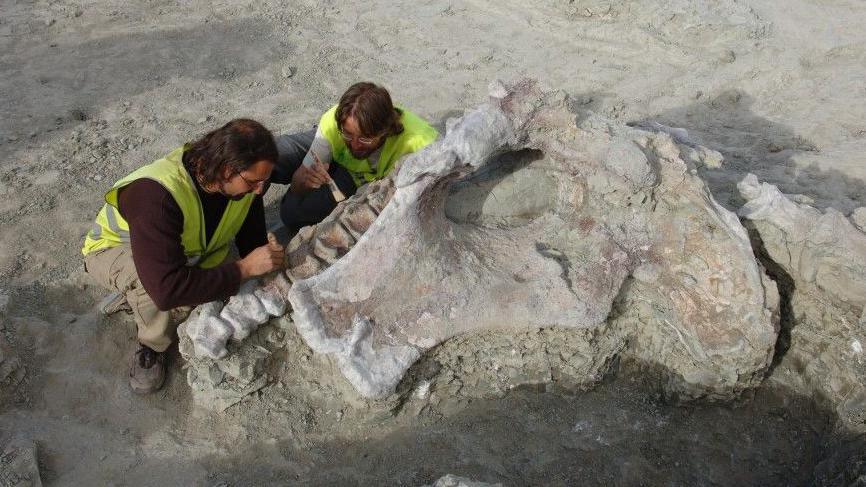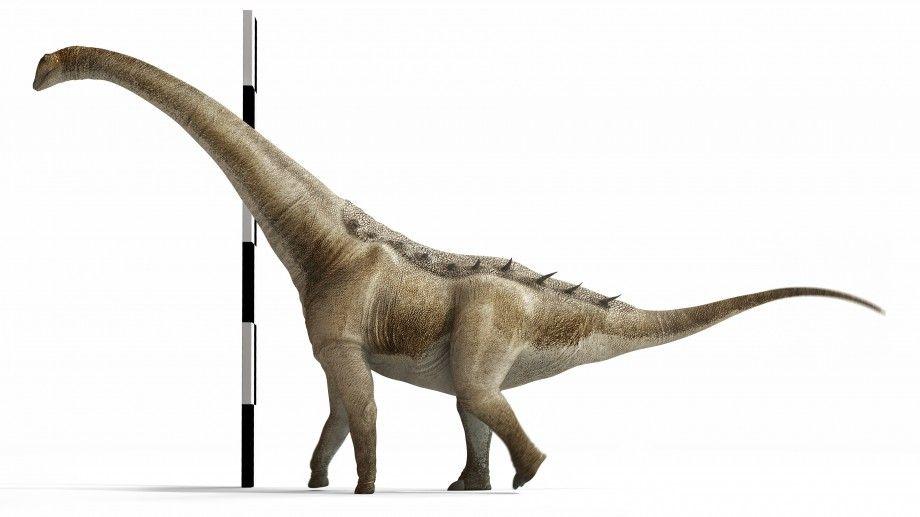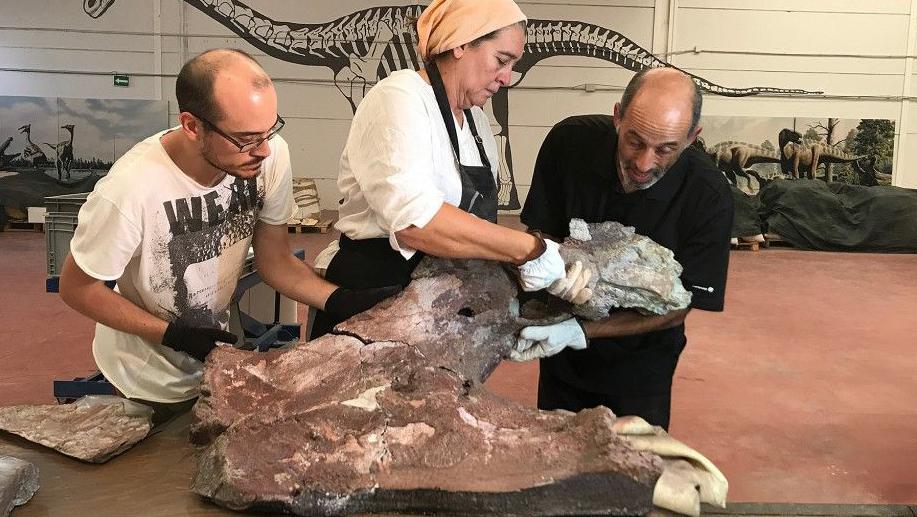New species of giant dinosaur discovered in Spain

- Published
Scientists have discovered a new species of giant dinosaur in Spain.
The dinosaur was part of an incredible treasure trove of more than 10,000 fossils which were discovered at the Lo Hueco fossil site near Cuenca, a mountainous town in Spain back in 2007.
Since then teams of palaeontologists - scientists who study dinosaurs - have been busy researching the fossils there and discovered that one of the titanosaur skeletons belonged to a brand new species.
The palaeontologists named the new species: Qunkasaura pintiquiniestra - as a reference to the area it lived in, the Latin name for lizard, Spanish painter Antonio Saura, and a character from a novel by famous Spanish author Don Quixote - or 'Qunka' for short.
Can we bring dinosaurs back? Video, 00:00:57
- Published11 January 2018
Isle of Wight dino is 'most complete' in more than 100 years
- Published10 July 2024
First dinosaur named 200 years ago - what have we learned?
- Published14 February 2024
What was the Qunkasaura pintiquiniestra like?

Scientists think the Qunka would have lived around 75 million years ago, and belonged to the sauropod family.
Sauropods were enormous dinosaurs that walked on four legs and had really tall necks - like giraffes - with a small head and long tail.
The dinosaurs were herbivores - meaning they only ate plants - and fossils of sauropods have been found on every continent, including Antarctica.
The scientists studying the fossil found it to have unusual tail bones, which had only ever been seen before in a specific group of titanosaurs from South America.

They also found it interesting that the creature was so big, based on where it was found.
The Qunka is a medium-to-large-sized titanosaur, reaching nearly 15m long.
"A lot of dinosaurs are small because they have small areas to live in, so they have a small amount of resources," said paleontologist Pedro Mocho, lead author of the study.
In Europe titanosaurs are generally much smaller than those from North and South America, which can reach over 25m long.
The researchers are still studying the fossils from the site, and think they might make even more exciting new discoveries in the future!
